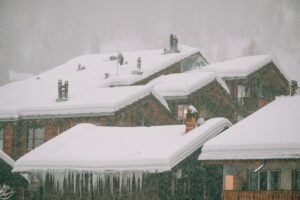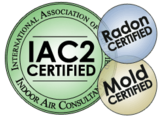 It’s been a great winter in Park City, Utah for those who love snow. According to the Salt Lake Tribune, “The snowfall in Salt Lake City last month (December) made for one of the snowiest Decembers in the past 20 years, according to the National Weather Service. December 2022 saw 22.6 inches of snow — the snowiest December for Salt Lake City since 2007, when the city saw 29.8 inches of snow.”
It’s been a great winter in Park City, Utah for those who love snow. According to the Salt Lake Tribune, “The snowfall in Salt Lake City last month (December) made for one of the snowiest Decembers in the past 20 years, according to the National Weather Service. December 2022 saw 22.6 inches of snow — the snowiest December for Salt Lake City since 2007, when the city saw 29.8 inches of snow.”
Winters like this can cause problems for homeowners that extend beyond snow removal. Ice dams can form given all the moisture we’re seeing in the form of snowfall.
article below courtesy of by Nick Gromicko, nachi.org
An ice dam is a ridge of ice that forms at the edge of a roof and prevents melting snow from draining. As water backs up behind the dam, it can leak through the roof and cause damage to walls, ceilings, insulation and other areas.
Ice dams are problematic because they force water to leak from the roof into the building envelope. This may lead to:
- rotted roof decking, exterior and interior walls, and framing;
- respiratory illnesses (allergies, asthma, etc.) caused by mold growth;
- reduced effectiveness of insulation. Wet insulation doesn’t work well, and chronically wet insulation will not decompress even when it dries. Without working insulation, even more heat will escape to the roof where more snow will melt, causing more ice dams which, in turn, will lead to leaks; and
- peeling paint. Water from the leak will infiltrate wall cavities and cause paint to peel and blister. This may happen long after the ice dam has melted and thus not appear directly related to the ice dam.
Prevention
- Keep the entire roof cold. This can be accomplished by implementing the following measures:
- Install a metal roof. Ice formations may occur on metal roofs, but the design of the roof will not allow the melting water to penetrate the roof’s surface. Also,
 snow and ice are more likely to slide off of a smooth, metal surface than asphalt shingles.
snow and ice are more likely to slide off of a smooth, metal surface than asphalt shingles. - Seal all air leaks in the attic floor, such as those surrounding wire and plumbing penetrations, attic hatches, and ceiling light fixtures leading to the attic from the living space below.
- Increase the thickness of insulation on the attic floor, ductwork, and chimneys that pass through the attic.
- Install a metal roof. Ice formations may occur on metal roofs, but the design of the roof will not allow the melting water to penetrate the roof’s surface. Also,
- Move or elevate exhaust systems that terminate just above the roof, where they are likely to melt snow.
- A minimum of 3″ air space is recommended between the top of insulation and roof sheathing in sloped ceilings.
- Remove snow from the roof. This can be accomplished safely using a roof rake from the ground. Be careful not to harm roofing materials or to dislodge dangerous icicles.
- Create channels in the ice by hosing it with warm water. Because this process intentionally adds water to the roof, this should be done only in emergencies where a great deal of water is already flowing through the roof, and when temperatures are warm enough that the hose water can drain before it freezes.
Prevention and Removal Methods to Avoid
- electric heat cables. These rarely work, they require effort to install, they use electricity, and they can make shingles brittle.
- manual removal of the ice dam using shovels, hammers, ice picks, rakes, or whatever destructive items can be found in the shed. The roof can be easily damaged by these efforts, as can the homeowner, when they slip off of the icy roof.

